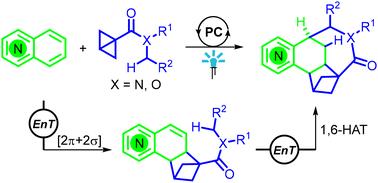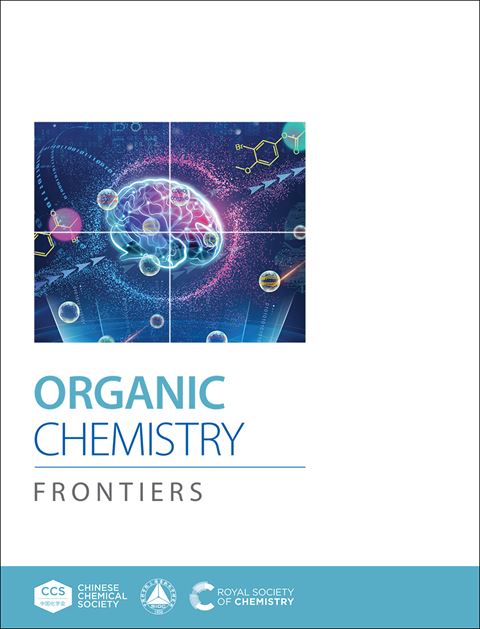Successive energy-transfer catalytic dearomative reactions of quinolines with bicyclo[1.1.0]butanes for the synthesis of pyridine-fused 3D complicated molecules
IF 4.6
1区 化学
Q1 CHEMISTRY, ORGANIC
引用次数: 0
Abstract
Dearomative photocycloadditions are unique and hard to replace methods for the construction of various polycyclic strained molecules to increase saturation and create three-dimensional (3D) molecular complexity. In this article, we report a facile photochemical strategy for the synthesis of pyridine-fused 3D polycyclic molecules from quinolines and bicyclo[1.1.0]butanes (BCBs) under visible-light conditions. The dearomative reactions proceed via an initial triplet–triplet energy transfer (EnT) enabled [2π + 2σ] cycloaddition to form an adduct, in which the vinylpyridine moiety is still excitable under the same photosensitive conditions. By introducing a suitable alkyl group as an H-donor into a BCB, a 1,6-hydrogen atom transfer (HAT) would occur from the alkyl group to the excited vinylpyridine moiety via a second EnT process, generating a 1,7-diradical; subsequent ring closure produces a seven-membered 2D/3D-fused molecule. The rare 1,6-HAT process was confirmed through dynamic tracking, control experiments, quenching studies and deuterium-labeling experiments. Applying this strategy, we have successfully obtained a series of structurally unique 6-6-5-4-7 ring 3D molecules with wide functional group tolerance and compatibility with various C–H bonds and various quinolines. Meanwhile, it provides a new idea for the construction of polycyclic architectures by utilizing the infrequent 1,6-HAT of an excited olefin to generate 1,7-diradical species.

求助全文
约1分钟内获得全文
求助全文
来源期刊

Organic Chemistry Frontiers
CHEMISTRY, ORGANIC-
CiteScore
7.90
自引率
11.10%
发文量
686
审稿时长
1 months
期刊介绍:
Organic Chemistry Frontiers is an esteemed journal that publishes high-quality research across the field of organic chemistry. It places a significant emphasis on studies that contribute substantially to the field by introducing new or significantly improved protocols and methodologies. The journal covers a wide array of topics which include, but are not limited to, organic synthesis, the development of synthetic methodologies, catalysis, natural products, functional organic materials, supramolecular and macromolecular chemistry, as well as physical and computational organic chemistry.
 求助内容:
求助内容: 应助结果提醒方式:
应助结果提醒方式:


